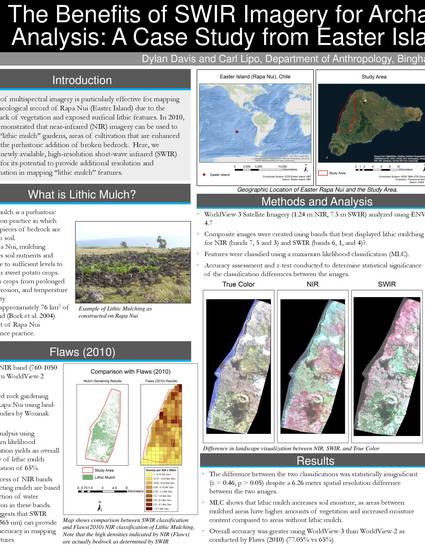
Article
The Benefits of SWIR Imagery for Archaeological Landscape Analysis: A Case Study from Easter Island (Rapa Nui), Chile
Research Days Posters 2016-2019
Publication Date
4-21-2017
Document Type
Poster
Keywords
- multispectral imagery,
- Eastern Island,
- mapping
Description
"The use of multispectral imagery is particularly effective for mapping the archaeological record of Rapa Nui (Easter Island) due to the island’s lack of vegetation and exposed surficial lithic features. In 2010, Flaws demonstrated that near-infrared (NIR) imagery can be used to identify “lithic mulch” gardens, areas of cultivation that are enhanced through the prehistoric addition of broken bedrock. Here, we evaluate newly available, high-resolution short-wave infrared (SWIR) imagery for its potential to provide additional resolution and discrimination in mapping “lithic mulch” features."
Disciplines
Citation Information
Dylan Davis and Carl Lipo. "The Benefits of SWIR Imagery for Archaeological Landscape Analysis: A Case Study from Easter Island (Rapa Nui), Chile" (2017) Available at: http://works.bepress.com/carl-lipo/13/
